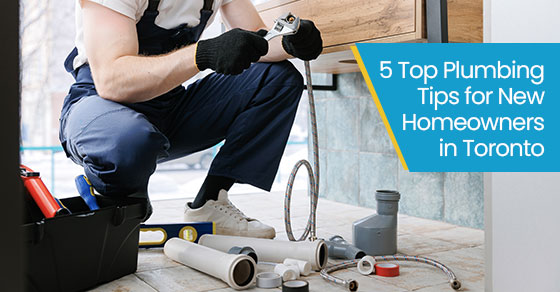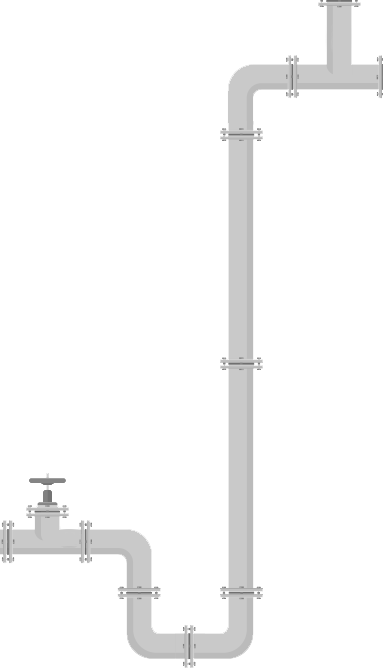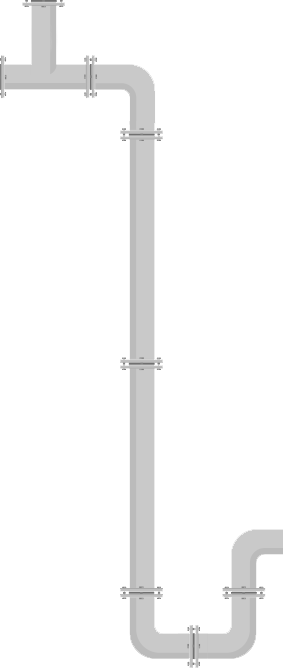5 Top Plumbing Tips for New Homeowners in Toronto
Posted by Jason Genah on 12-03-2024

Owning a home is a huge responsibility and exciting all at the same time. You can decorate and change things to have the perfect interior and exterior that your heart desires.
With home ownership, however, comes the responsibility of maintenance and repairs when problems arise. These can seem daunting and intimidating, but you can do a few things to prevent and stop issues before they become a financial burden.
Fortunately, you don’t need to be an expert plumber in Toronto to be a homeowner, as partnering with one is the best option. Until then, here are a few tips to keep in mind.
1. Get a professional inspection done
This is usually a requirement before signing on the dotted line in any home purchase. Nevertheless, make sure that the plumbing is fully inspected before moving in.
A qualified and licensed plumber can tell you if the pipes and materials are up to code or if they should be replaced. They can also identify potential future problems and give you the best advice on what should be done and when.
While newer homes will have fewer issues, older residences may have materials that were up to code then, but not today. Materials such as PVC, PEX, and CPVC pipes have different uses and are common now, whereas galvanized steel and copper were the standard a few decades ago.
Pipes also need to be laid out in a particular pattern to ensure the best water flow and pressure. Therefore, if you see a down pipe coiled around beams like a snake in a tree, then this should be changed.
2. Check for water leaks
While they may look similar, there is a difference between condensation buildup and water leaking from a pipe. If you notice that your water bill is increasing vastly each month, then the leak has been going on for too long, and the damage may be even more costly.
Check your cupboards under sinks in the kitchen, bathrooms, and elsewhere throughout the house to make sure that there are no water stains, moisture, or puddles.
If you hear dripping or a whooshing sound when someone uses the shower or toilet in another part of the house, this should be investigated quickly. While the after-leak may not be visible immediately, it could be a sign of water building under floors or flowing through the walls on the inside. This can lead to ceiling collapses and mould issues.
Condensation usually builds up in the warmer places where cool water flows, such as a furnace room or basement area. These should be monitored as a buildup of condensation can also lead to mould.
3. Don’t buy all the plumbing tools
It can be very tempting to go out and purchase every plumbing tool you see in your local hardware store, just in case, but you don’t need to do so. As long as you have a plunger, drain cleaner, and a bucket, this is really all you need until you can get a professional to come and fix the problem.
For the untrained home plumber, trying to fix complex issues can lead to bigger problems. If the clog in your pipe is further down than a plunger can reach, you don’t want to start taking the pipes apart and using long snakes to see if you can fix it. Sometimes, the clog is so far down that only professional equipment can handle it.
Most home clogs can be dealt with when you have a drain cleaner and a plunger. If the toilet is running slow, then fill a basket with water, hold it up high, and pour the water in as fast as possible. This will usually flush out the problem.
4. Know where your valves are located
Knowing where all your water shut-off valves are is important. Yes, there is more than just the main water valve.
The others are small and usually located on the pipe going to a toilet, near the pipes under the sink, and even right beside the washing machine. These allow you to turn the water off to a particular area without shutting it off to the whole house.
All the valves should be checked regularly and operated by hand without a wrench or other tools. Corrosion buildup can be an issue. This can be addressed by simply purchasing replacement valves at your local hardware store.
In the event of a major water pipe burst, being able to get to the main shut-off valve will save you thousands of dollars within seconds. So, once located, ensure to keep the area free from clutter that could prevent you from getting to it in an emergency.
5. Insulate your pipes
Winters are harsh in Canada. The risk of pipes freezing is real and can be very costly. While it is recommended to keep the home around 16 degrees Celsius to prevent freezing, having your pipes insulated will also be beneficial.
You don’t need to insulate all the pipes. The ones inside the house, like in your bathrooms and kitchen, will work fine under normal temperatures. However, the pipes in the basement, especially in unfinished basements, are at a high risk of freezing.
Get a professional plumber to correctly insulate the pipes at risk of freezing before the winter sets in.
Contact Our Expert Plumbers in Toronto
With simple care and maintenance, you can prevent most plumbing incidents. When serious trouble arises, however, Drain King Plumbers are your local heroes who can quickly and efficiently repair any issue.
With routine and emergency services available 24/7, we are the only plumbing service you need. You can call us at 1-833-983-5663. Alternatively, you can go online and contact us here to see how we can help you today.




